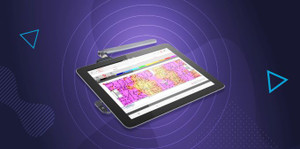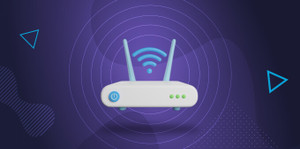Cell Phone Signal Booster Installation Guide
How To Install A Cell Phone Signal Booster
Cell phone signal boosters, also known as repeaters and extenders, are designed to amplify LTE/4G/5G signals to enhance talk, text, and data reliability. Optimal performance is achieved through proper installation.
Improper cell booster installation, on the other hand, can negatively affect amplification power and coverage area.
Let's take a look at how to install a home, commercial, car, and RV cell phone signal booster.
Take advantage of our system design and installation services. Learn more or call us for a free consultation: 1-800-969-8189.
How to Install a Home Signal Booster
Installing a home cell phone booster is straightforward and doesn't require professional expertise. You can easily set it up yourself with just a few tools: a ladder, your smartphone, a Phillips-head screwdriver, and an adjustable wrench.
Step 1: Find Area Outside Your Home Receiving Strongest Cellular Signals
Cell phone signal boosters utilize an outdoor antenna to capture over-the-air cellular signals. Its location is vital for maximizing amplification. Thus, before installing the antenna, it’s extremely important to find the area with the best signal.
This can be done by walking around your home and using:
- Your phone’s signal bars (Easy Method): The side of your home that provides the most bars will be the area where you should install the antenna. However, it's important to note that even though phone bars are an easy way to see signal strength, they are subjective measurements.
- dBm measurements (Best Method): dBm values are not subjective and accurately define signal strength. Typically, mobile signal strength can range from -50 (great signal) to -120 dBm (near dead zone). The side of your home with the highest dBm measurement will be where you want to install the antenna. Below is a brief overview of how to measure dBm.
How to Measure Signal Strength in dBm:
Option 1: Field Test Mode
For iPhone Users
- Dial *3001#12345#*
- If rsrp does not appear on home screen, click through the tabs to find rsrp
- Your dBm will be displayed in the rsrp0 field
Note: Not all iPhones display dBm values. So, if this doesn't work for you, the next best thing are speed test.
For Android Users
- Tap Settings
- Tap About Phone
- Tap Status or Network
- Tap SIM Status
- dBm is under Signal Strength
Note: Sequence will vary across Android devices.
Option 2: Apps
There are a variety of apps that have signal strength testing functionalities. Most of them are only available on the Google Play Store. Unfortunately, the Apple store does not offer these types of apps. A good alternative is a speed test app.
These are some of our recommendations:
To learn more, visit How to Measure Signal Strength.
Step 2: Installing the Outside Antenna
The outdoor antenna (also known as a donor antenna) should be installed where the strongest signal was detected. Usually, this would be on the roof of your house. That spot tends to have the best line of sight with cell towers as well as a lower number of signal-blocking obstructions.
You can use a mounting pole, a vent pipe, or a fascia to mount the antenna. This is where the ladder, Philips-head screwdriver, and adjustable wrench come in handy.
It’s recommended to place the antenna on or near the edge of the roof. If using a directional antenna, such as a yagi, make sure to point it away from your roof and in the direction of the nearest cell tower provided by your carrier. There is no need to aim an omnidirectional antenna.
In situations where installing the antenna on the roof is impractical, it can be mounted in the attic, on a wall, or on a window (in some cases) facing the cell tower. However, it's essential to note that any obstacles between the antenna and the tower can diminish signal strength. Consequently, the amplifier may receive a weaker signal, potentially reducing the coverage area.
Step 3: Connecting the Outdoor Antenna to the Amplifier
After the antenna has been installed, connect the coaxial cable that was included in the box to the antenna and run it inside your home. This can be done in multiple ways:
- Drilling a hole into your house
- Following your satellite TV antenna cable and running the coax cable alongside it and into your house
- Running the cable through a vent
- Use a flat window entry cable to run it underneath a window
Whichever method you decide to use, it’s recommended to put a drip loop in your cable before it enters the house. A drip loop is a low point or a loop on the cable that forces water water to drip off. Once the cable is inside, connect it to the signal amplifier.
Step 4: Installing the Inside Antenna
Ideally, the inside antenna should be installed in or near the area where you are experiencing connectivity issues. Cell phone signal booster kits can consist of different types of indoor antennas:
- Dome Antenna: This antenna is ceiling-mounted and will distribute a signal in a 360-degree beam.
- Panel Antenna: Most signal boosters are kitted with this type of antenna. It can be wall-mounted or ceiling-mounted. Directional, it broadcasts signals in a 45 to 70-degree beam. The signal will be strongest in the areas closest to it.
- Desktop Antenna: These antennas do not require mounting on a wall. They can be placed on any flat surface. Not as powerful as panels and domes, their coverage area is much smaller. Some boosters, like the weBoost Home Room, include a desktop antenna, while others, like the HiBoost Home 4K Plus, feature a 2-in-1 amplifier/antenna combo.
When installing the inside antenna, make sure there is at least a distance of 20 feet vertical, 50 feet horizontal, or a combination of the two between the outside and inside antennas to prevent oscillation, which will cause the booster to shut down. After placing the antenna in your desired location, connect the coaxial cable that was included in the box to the antenna and the amplifier (excluding amplifier/antenna combos).
Step 5: Power On
The final step is to connect the power cord to the amplifier and a wall outlet. It will take a few seconds for the booster to configure itself. Once it’s done, the green lights on the booster mark the end of poor reception and dropped calls.
If at any point in time, you want to adjust the equipment’s location or troubleshoot the amplifier, simply unplug the power cord, and plug it back in after a few seconds. Similar to how you would restart a router to reset your wireless signal.
How to Install a Small Business or Commercial Signal Booster
For DIY small business cell phone signal boosters, the installation process is similar to that of home units.
Commercial units, on the other hand, include a professional installation. You don't have to worry about measuring cell signal strength, finding the best spot for the antennas, or running cable. Our professional installers will take care of everything and ensure optimal setup for best performance.
How to Install a Car Signal Booster
Installing a vehicle signal booster is fast and simple. You won't need any tools.
Step 1: Installing the Amplifier
The amplifier can be placed anywhere in your vehicle, as long as it's properly ventilated. Most people place the amplifier under a seat, but it can also be mounted to a seat.
Step 2: Installing the Outside Antenna
Most vehicle boosters feature a magnetic mount antenna, making them extremely easy to set up on a car, truck, or SUV. Simply place the external antenna on the roof of your vehicle, and voila.
For optimal performance, the antenna should be at least 6 inches away from any windows and at least 1 foot away from any other antennas on your vehicle's roof. Run the cable below a door's weather seal and connect it to the amplifier.
Step 3: Installing the Inside Antenna
Low-profile antennas are the most common in-vehicle antennas. They can easily be Velcroed vertically or horizontally to the dashboard or a seat. Cradle antennas require air-vent mounting. Regardless of which antenna your booster uses, it must be placed at least 8 inches away from any person.
After the antenna has been installed, connect the antenna's cable to the amplifier.
Step 4: Power On
To complete the vehicle booster’s installation, connect the DC power supply to the booster and the auxiliary power outlet. It will take a few seconds for the booster to configure itself. Once it’s done, if all the lights are green, you’re good to go.
How to Install an RV Signal Booster
Installing an RV signal booster is not hard. The most difficult step is installing the outside antenna. You'll need a Phillips-head screwdriver and an adjustable wrench.
Step 1: Installing the Amplifier
The amplifier can be placed anywhere in your RV, as long as it's properly ventilated and close to a power outlet. It can be mounted on a wall, placed on a counter, or inside a cabinet.
Step 2: Installing the Outside Antenna
RV outside antennas need to be securely mounted on the roof. It can be easily attached to the RV’s ladder or railing support post.
Most RV boosters use omni antennas. For optimal results, mount the antenna vertically, do not mount it horizontally or at an angle. Doing so will degrade the booster’s performance.
Similar to a home booster, the higher you can get the antenna the better. This will improve the line of sight between the antenna and the cell tower, as well as reduce the number of cell phone signal-blocking materials. Just make sure the antenna is below the maximum height allowed in your state.
Step 3: Connecting the Outdoor Antenna to the Amplifier
After the external antenna has been installed, connect the coaxial cable that was included in the box to the antenna and run it inside the RV. This can be done by drilling a hole in the roof or wall and weatherproofing it later. You can also reroute the cable through an existing entry point. After connecting the cable to the booster, make sure to secure the cable outside with cable clips or cable tie mounts.
Step 4: Installing the Inside Antenna
The inside antenna should be installed in the area where you wish to improve your cell signal. RV boosters, like the weBoost Drive Reach RV, utilize desktop antennas to improve the signal indoors, while others, like the Cel-Fi GO-M, use low-profile antennas or inside whip antennas.
- Desktop antennas are extremely easy to set up. Simply place the antenna on any flat surface.
- Low-profile antennas can easily be Velcroed vertically or horizontally to the dashboard or a seat.
- Inside whip antenna connects directly to the amplifier. For optimal results, make sure it’s in an upright position.
After placing the antenna in the area where you wish to improve your signal, connect the antenna's cable to the amplifier (excluding the inside whip antenna).
Step 5: Power On
To complete the RV booster’s installation, connect the AC/DC power supply to the booster and the auxiliary power outlet or wall outlet. It will take a few seconds for the booster to configure itself. Once it’s done, if all the lights are green, you’re good to go.
FAQs
What Do the Different Colored Lights on My Signal Booster Mean?
The lights indicate the performance of your signal booster. They will tell you if the booster is working fine or if issues, like oscillation or overload, were detected. Colors may vary across manufacturers. Reference your unit's user manual for information.
What is Oscillation and How to Prevent It?
Oscillation refers to a feedback loop between the outside and inside antennas. It's caused by them being installed too close together. When detected, the booster may reduce power or shut down affected bands.
You can fix this by increasing the distance between the antennas. Restart the booster anytime you make an adjustment.
What is Signal Overload and How to Prevent it?
Overload refers to the outside antenna receiving too strong of a signal. When this happens, most boosters, aside from commercial units, are designed to shut down affected bands.
You can fix this by moving your omnidirectional antenna to an area with slightly weaker signal or pointing your directional antenna slightly away from the source. Restart the booster anytime you make an adjustment.
Contact Us
Signal Boosters Canada is a leading provider of IC-approved cell phone signal boosters for homes, vehicles, and commercial buildings. We believe everyone should enjoy great cell phone signal, including rural Canadians. Providing that is our goal.
We provide lifetime support and 2-3 year warranty on all of our signal boosters. Call us (1-800-638-6336) or email us (sales@signalboosterscanada.ca), and we will assist with any issues you might be experiencing with poor cell service.



